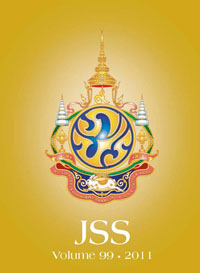Japan’s official relations with Shamuro (Siam), 1599–1745: As revealed in the diplomatic records of the Tokugawa Shogunate
Main Article Content
Abstract
Newly translated documentary information concerning Japan’s relations with Siam reveals how the early seventeenth-century phenomenon of Japanese merchants leading commercial expeditions into Southeast Asia, and the so-called Nanban (Southern barbarian) trade with European explorers, was largely driven by Tokugawa Ieyasu and his desire for saltpetre. The vital component of black powder (gunpowder), saltpetre was not readily produced in Japan and, therefore, had to be imported from Siam and the other entrepôts of Southeast Asia. The shogunate’s need helps explain the issue of vermillion-seal trade licenses to Japanese merchants from 1604 to 1615. After 1630, relations between Siam and Japan ceased following the death of Yamada Nagamasa, a key Japanese “agent” in Siam. Beyond his death, however, the present study elucidates how Japan’s commercial and diplomatic relations with Siam turned on key events in contemporary Japanese history: the establishment and maintenance of the Tokugawa shogunate and the so-called Pax Tokugawa. Study of the Tokugawa shogunate’s diplomatic records affords the opportunity to re-evaluate historical trade between Japan and Siam, and highlights the essentially peripheral position of the Japanese economy in the emerging world market.


